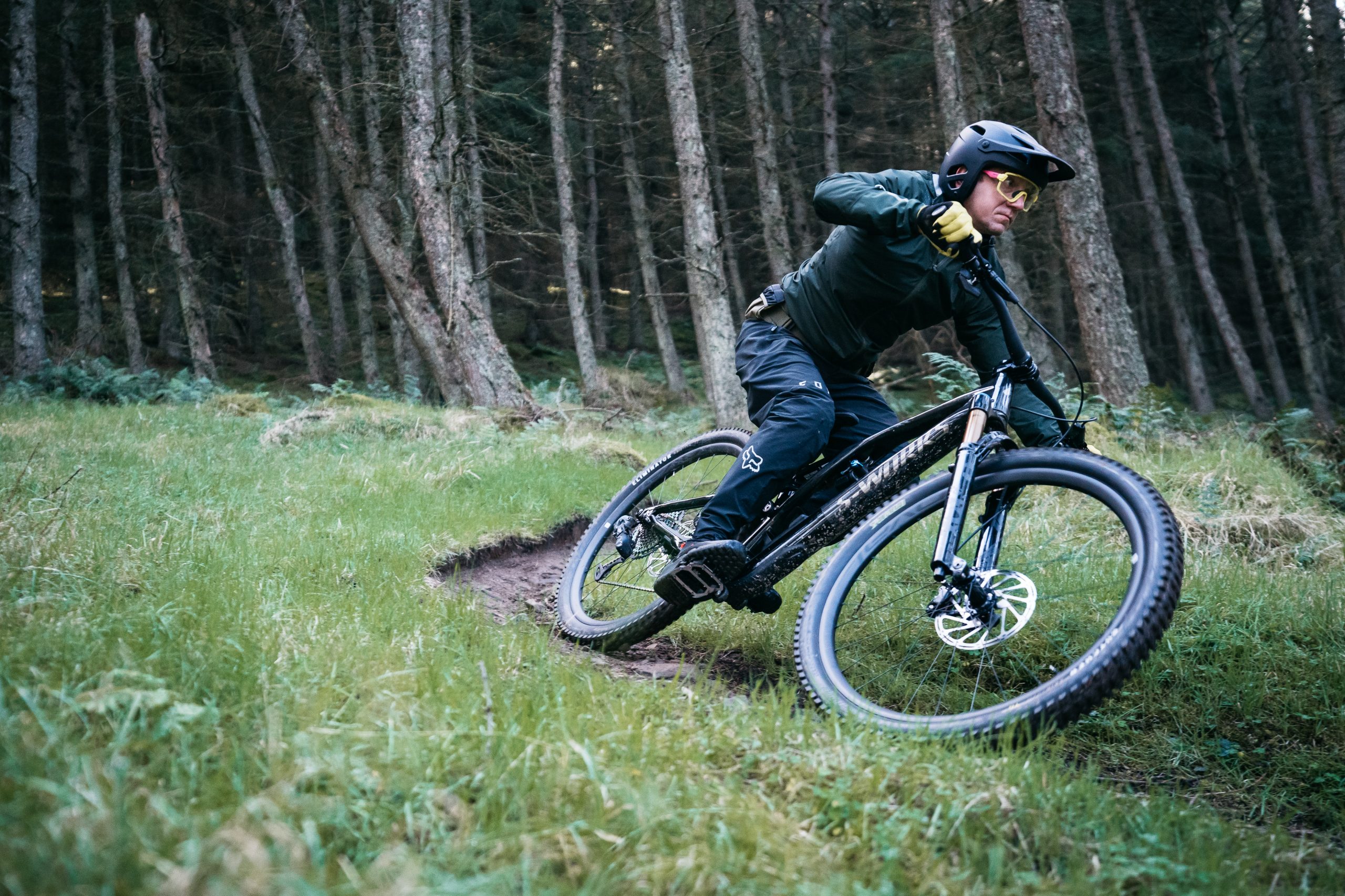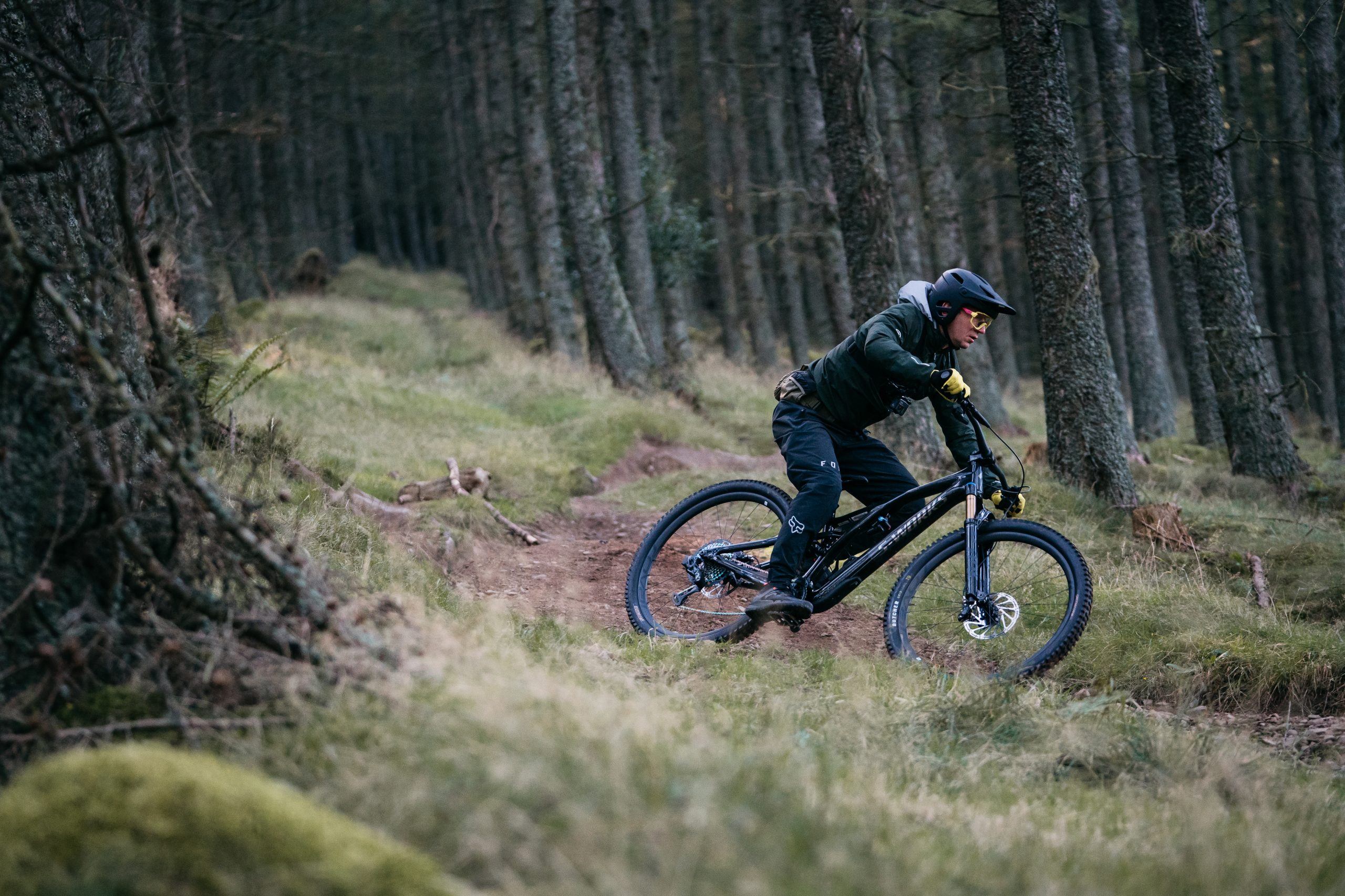With the new Specialized S-Works Stumpjumper Evo, Specialized revamps its most radical trail bike to date. That means more sizes and multiple geometry configurations
2021 Specialized S-Works Stumpjumper Evo: first ride review
With the new Specialized S-Works Stumpjumper Evo, Specialized revamps its most radical trail bike to date, with more frame sizes and multiple geometry configurations.
Read more: Best full-suspension trail bikes for 2020
Specialized S-Works Stumpjumper Evo need to know
- Aggressive version of Specialized’s classic trail bike
- Now only available with 29in wheels and a carbon frame (although there is a mullet version)
- Highly adjustable chassis gives you three head angle options and two BB heights
- Massive range of six frame sizes using the ‘S’ scale (S1-S6)
- Travel gets a boost with a 160mm suspension fork paired to a 150mm travel rear end
- Shorter seat tubes for better standover, longer dropper posts and more sizing overlap
Specialized reintroduced the Evo in 2018 and it was an instant hit with journos, bike shop staff and anyone who wanted a no-frills trail bike with the geometry and attitude of an enduro bike. In fact, at the time of launch it put Specialized’s actual enduro offering to shame, with better sizing and more radical geometry, and it took the Enduro a year to catch up.
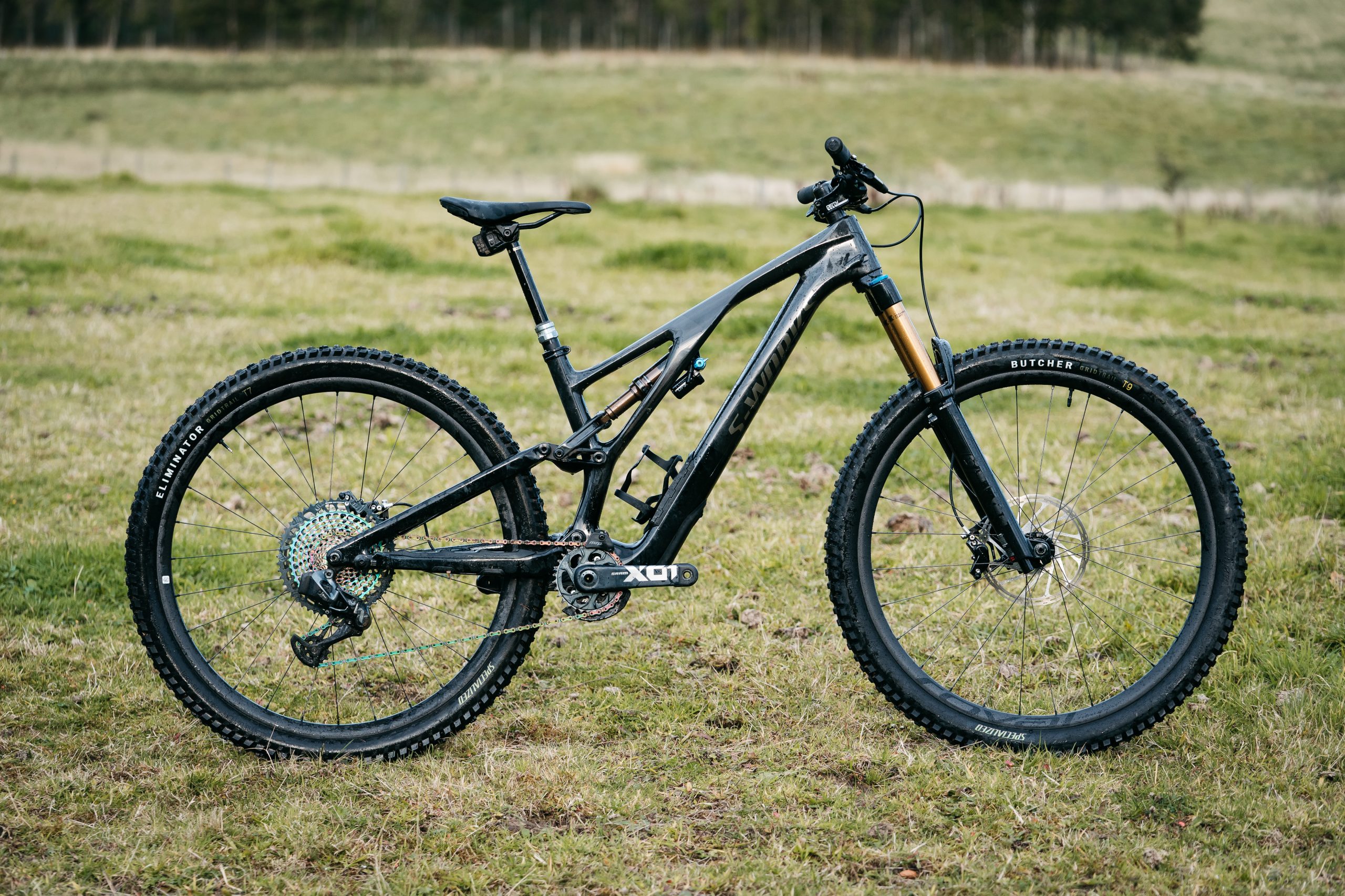
The new Stumpy Evo still makes most enduro bikes look conservative, and now it comes in a wider size range with even more standover
It woke people up to the possibility that a trail bike could be slacker than 65º and still climb hills, that a bike’s headline weight wasn’t the ultimate indicator of agility, and that you could actually design a flip-chip with more than one usable setting. It had such an impact on me when it was launched that I nagged Specialized mercilessly until it got so sick of my gushing and pining that it sent me a frame to build up as a long term test bench.
To see such a powerful global brand such as Specialized take a punt with a bike like the Evo was exciting to see, and it certainly motivated other mainstream brands to modernise their approach to sizing and geometry. Well, now there’s a new model unleashed onto showroom floors, and while it’s not as groundbreaking as its predecessor, the updates go beyond skin deep.
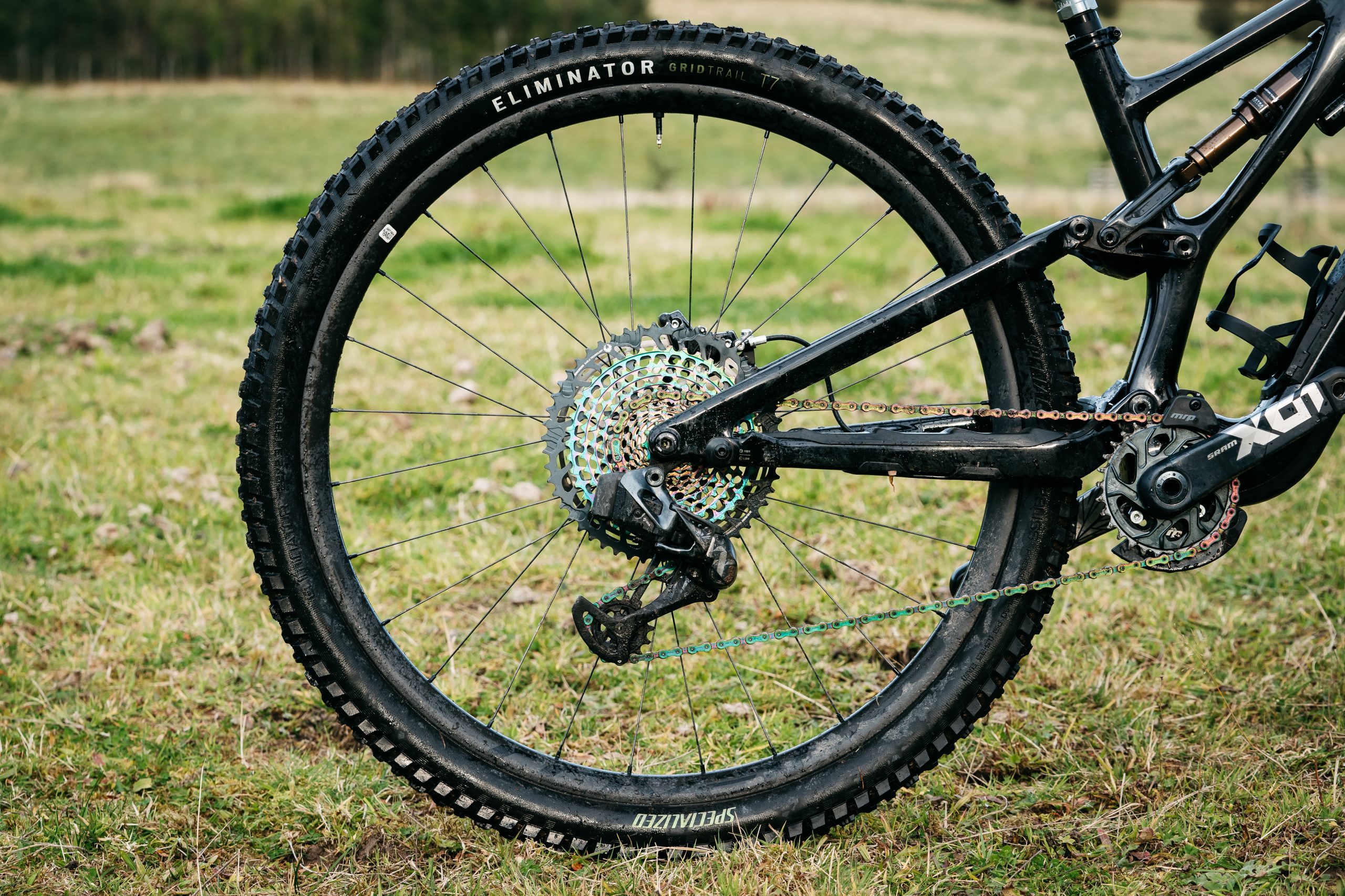
Rear travel now sits at 150mm (up from 140mm on the old Evo 29er) and there’s a Limited mullet version
Bye bye small wheels (up front at least)
The big news is that Specialized has ditched 27.5in wheels – up front, at least – but introduced a mullet-equipped model called the Limited. And, for now at least, there are no alloy frames either. Never say never though, even if Specialized tells us that there are no immediate plans for one.
While its decision to make the new Evo an all-carbon affair would seem to go against the ethos of a bombproof, affordable shredder, it has gone some way to answer any criticism over lofting the Evo out of reach of its very customer base by offering a Comp model at £3,900 – that’s just £500 more than last year’s complete alloy bike with no appreciable drop in spec.

The Stumpy Evo comp sits at the opposite end of the range to the S-Works. For £3,900 you get a carbon frame and Fox 36 Rhythm fork and SLX drivetrain
Super-size Evo
If there’s marginally less choice in terms of wheel size, there’s considerably more choice when it comes to the frame size. The old Evo only came in two sizes – S2 and S3 – but the new frame starts at S1 (XS) and goes all the way to S6 (XXL). That means a range of reach measurements that starts at 409mm and extends to an enormous 528mm. Better still, there’s more overlap for riders to up or down size now according to their personal preferences, as the standover heights remain impressively consistent throughout the size range and the seat tube length has been chopped by 25mm on the popular S4 frame. The previous generation had this flat-back, squared off top tube from the Sidearm back that hampered rider movements and was entirely at odds with the bike’s sling-it-around-like-a-slalom-whip remit. Now the top tube line flows back at a similar angle to the seatstays, creating space for the saddle to drop into and your knees to pinch. It’s also worth noting that, if you’re coming from the old Stumpy Evo, the previous S3 is equivalent to the new S4 in terms of reach, and the old S2 is now the new S3.

Chopping down the seat tube height and increasing the standover has really opened up the possibilities for getting sideways and steezy
Another key point is that the old bike had a really short head tube (105mm on the S3) combined with a 150mm travel fork that pulled a lot of rider weight over the front wheel. It was something that took me a while to get right without making the bike too slack or too short. For the new model, not only has Specialized increased the fork travel by 10mm, it has also lengthened the head tube by the same amount on the S4 and 5mm on the S3. Suffice to say I had no problem getting the right bar height and weight balance with the new bike.
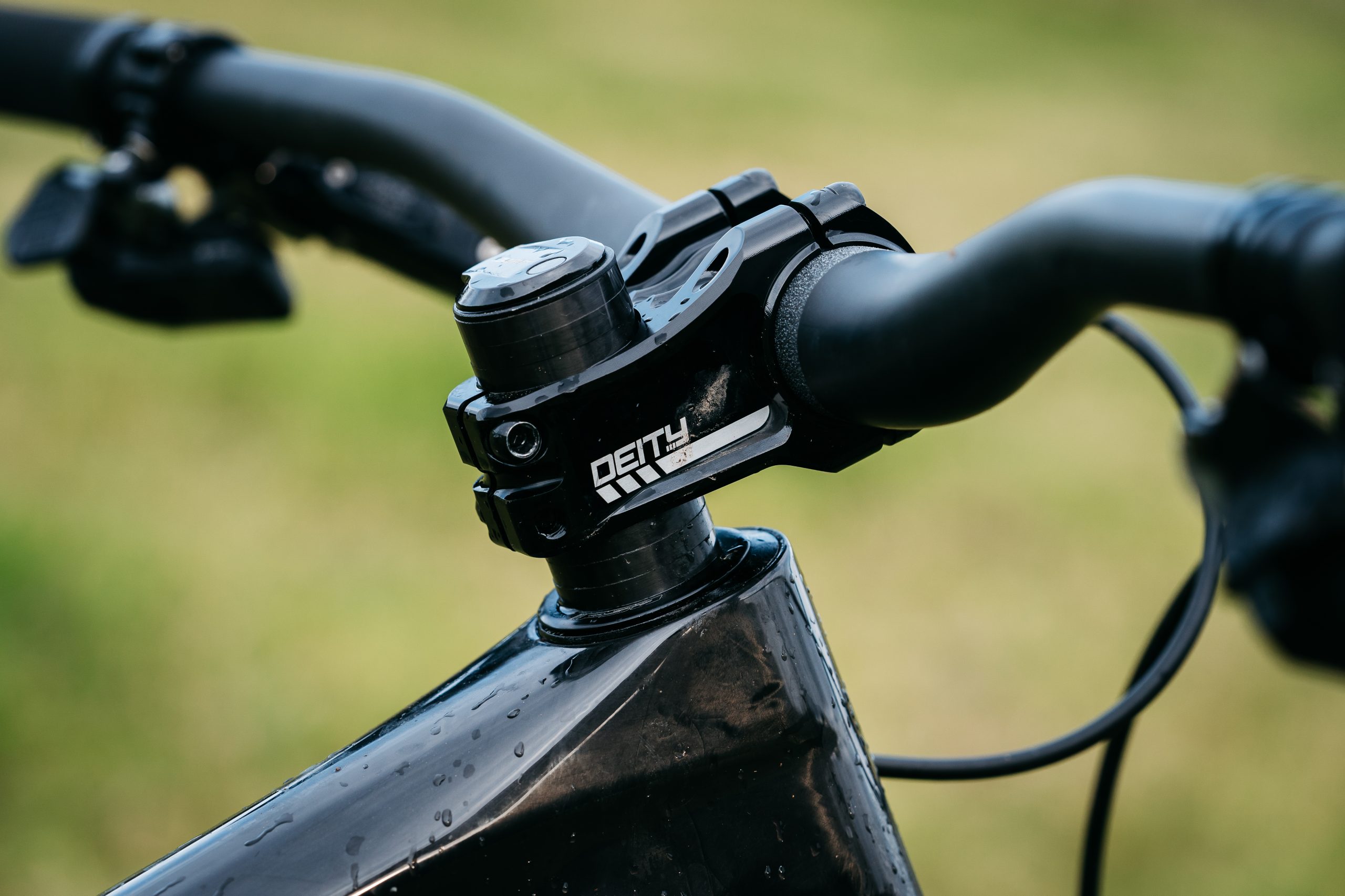
Longer head tube and extra fork travel makes it much easier to get a comfortable cockpit height and weight balance on the bike
Adjustable geometry
The previous Evo was a rare beast in that it actually had two usable geometry settings. High/Steep was, in fact, neither high, nor steep, but gave the bike just enough pedal clearance to avoid digging furrows up every climb, and a more manageable head angle for mellow gradients. In other words, it was the all-round, versatile trail bike setting. Then, for days at the bike park and trips to the alps, there was the Low/Slack position that, on my bike at least, left the head angle at 63.3º and the BB at 330mm. For 2021 the new Evo takes that tunability to the next level with an independently adjustable head angle and BB height.
Specialized has designed a system of offset headset cups to give the variable head angle. These alloy inserts drop into the frame – no need for a press as the bearings sit directly in the cups – and by producing both angled and a straight-through versions, two different cups give three different head angles. The neutral setting that the bike is shipped in is a claimed 64.5º. Switch the cups and you can rake it out to 63.5º. Reverse those same cups in the frame and it’ll give you 65.5º. Drop the BB height and those numbers will slacken by a further 0.5º. The switch is quick and can be done with a multi-tool, meaning you could actually do it in the car park before a ride.
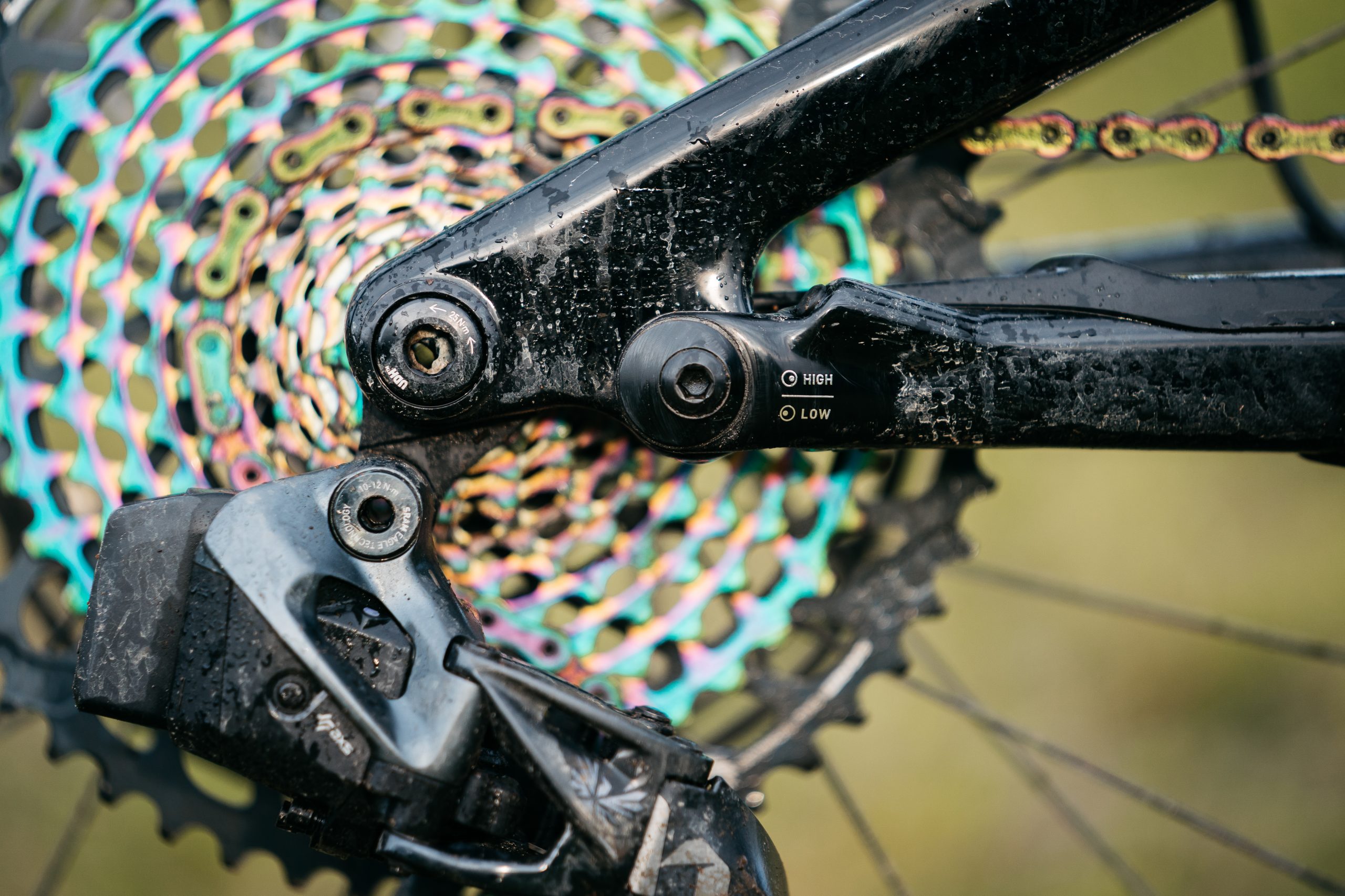
Combined with a flip chip Horst link that lets you change the BB height, there are six different geometry settings on the new Evo
Now on most Specialized models, changing the head angle is done at the shock yoke, which means that there is an unavoidable effect on bottom bracket height. A slack head angle means a low BB and vice versa. Which might not be quite right for the terrain you’re riding. Now, by moving the head angle adjustment to the head tube, there’s a negligible effect on BB height. But the Stumpy Evo also has two BB heights, which, innovatively, are achieved via a flip chip at the Horst link. This changes the BB height by 5mm, with the lowest setting a claimed 326mm and the highest being 343mm. It also has a knock-on effect on chainstay length, with the rear centre extending by 5mm in the low setting. A clever feature, as low this will also help maintain weight balance.
So, if you’ve been paying attention, you’ll have worked out that there’s six different geometry configurations. Factory setting for the Evo is middle head angle and high BB, but Specialized has produced a comprehensive set of geometry charts covering all of the variations, as well as a decent guide explaining which scenarios might work best with each setting.
Two chainstay lengths
With six frame sizes and a yawning chasm between the shortest reach on the S1 and the longest on the S6, the obvious question is, what about the rider weight balance? Surely with front centre measurements growing from around 740mm to 880mm, the rider’s centre of gravity will shift rearwards massively across the size range. Specialized has an answer for that though, with two different chainstay lengths depending on the frame size. S1 to S4 frames get 438mm chainstays, with the S5 and S6 versions 10mm longer. It should be enough to stop taller riders overloading the rear suspension on steeper descents.
A further possibility that could be offered down the road by Specialized, or even third-party vendors, are adjustable reach inserts similar to those found on the new Canyon Sender DH bike. You would have to forfeit the angle adjust, but if you wanted to tweak your bars-to-feet when standing, or you felt you had fallen through the cracks between frame sizes, adjustable reach cups would be a great option.

Fox Float DPX2 shock has two different tunes depending on the frame size and a volume spacer that lets you go up or down in terms of spring progression
More progressive suspension
While Specialized has comprehensively overhauled the sizing and geometry adjustment on the new Stumpy Evo, it certainly hasn’t forgotten about the suspension. The previous generation worked well, up to a point, but it wasn’t the most progressive design. It’s why I experimented with a RockShox Super Deluxe shock with a MegNeg can to try and add some additional support and bottom-out resistance on my own bike. The new model has a refined leverage curve, more closely aligned with the new Enduro, that gives a nice linear progression with a little kick at the end of the stroke to add some ramp-up.
All Stumpy Evos come with Fox’s Float DPX2 shock, with the suspension tuned to work well out of the box with a mid-size volume spacer. This gives leeway for riders to go up or down with spacers to tune the spring curve. In terms of damping, the smaller models get a lighter rebound tune, with S4 upwards using a firmer rebound tune to cover higher shock pressures. Finally, the Evo is also designed to work well with a coil shock should you wish, and rear travel has been increased to 150mm.
New all-carbon chassis
We’ve taken a close look at how the geometry and sizing has changed on the new Evo, but the move to a full carbon range is also a big step. It’s true, the profile remains similar to the previous bike, but with four new frame sizes and increased standover height, there’s little shared with its predecessor. When Specialized introduced the Sidearm frame design it was in response to research that showed different frame sizes reacted differently to rider inputs and the larger frames lacked some precision. With the broadening of the Evo’s size range this learning has been applied to the lay-up of the new carbon frame to ensure a consistent ride feel. All models get the new Fact 11m carbon chassis, with the top end SWorks model getting a carbon yoke and all-up frame weight of 2,750g including shock for the S4. Full bike weight of our S4 demo bike was 13.85kg (30.5lbs).
Of course the new Evo also gets the SWAT door and internal frame storage first introduced on the Stumpy back in 2015. With a multi-tool in the head tube, the down tube comes ready-packed with a flexible plastic bladder bag that will hold 620ml of liquid. Of course, if you don’t need more water on board (there’s room for a bottle within the front triangle) you can use the space to stash tools, a tube, a pump, spares, food or even a packable jacket.
How does it ride?
Sadly I didn’t have as much time on the Evo as I would have like in order to really get beneath the skin of the new bike, but in a few uplifted runs of Innerleithen’s DH tracks, it displayed same infectiously hilarious ride quality that made me fall head over heels for it at the launch in Spain two and a half years ago, but with all the flaws and wrinkles ironed out. With my own Evo, I spent ages trying to dial in my riding position, playing with the suspension to add progression and travel, fitting a shorter offset fork to rein in the wheelbase, and saying to myself ‘if only it had a shorter seat tube and more standover clearance and some larger frame sizes for taller riders’. Well, all those issues have been addressed with the new bike, making it better in every way without – and this is crucial – losing its evocative DNA.
The first thing I noticed is that it feels smaller than the old bike, even if it actually has the same reach. On one hand, I put this down to the more compact frame, which sits that much further away from you at the seat tube and gives you so much more room to lean the bike over or angulate your hips in turns. Equally, I’m convinced the move to a shorter offset fork across the board has brought the front axle closer, making the front wheel seem easier to weight and control. Allied to that, the taller head tube and longer fork travel put my hands in the perfect position with just a couple of spacers under the stem.
Even staying in the stock settings of high BB (340mm) and 64.5º head angle, the Evo put on a masterclass in chuckable stability. Effortless to switch turns without the front wheel tucking or pushing, but unwaveringly planted on high-speed straights over Innerleithen’s infamous wave of terraced ruts. A monster truck in a straight line with the agility of a Tamiya radio-controlled buggy in the turns – an exceptionally quiet one at that, thanks to the integrated rubber frame protection. And with its additional travel and refined kinematics, there was the familiar flutter of the old bike, with even more depth and pop.
Being an uplift day, we didn’t take on any proper climbing, but on the short sections of uphill fire road, the Evo gave a surprisingly efficient platform for pedalling, with the compression switch within easy reach on the DPX2 shock in case I wanted to further sharpen the response.
But, and it’s a big but, there’s a serious flaw to the Stumpy Evo that wrecks its abilities on 90 per cent of UK terrain. Once again Specialized’s own brand tyres fail spectacularly to work in typical British cold, damp conditions. The new Gripton rubber compound might boast fancy gold logos, but they have precious little grip if the temperature is less than 15ºC and the trails have even a drop of moisture on them. Yes, it’s not the end of the world, but on our short pre-launch test ride, it proved incredibly frustrating. Like having an F1 track and a fleet of supercars all fitted with tyres from a Toyota Prius. If you are thinking of buying a new Stumpy Evo, be sure to budget for a decent pair of tyres.










